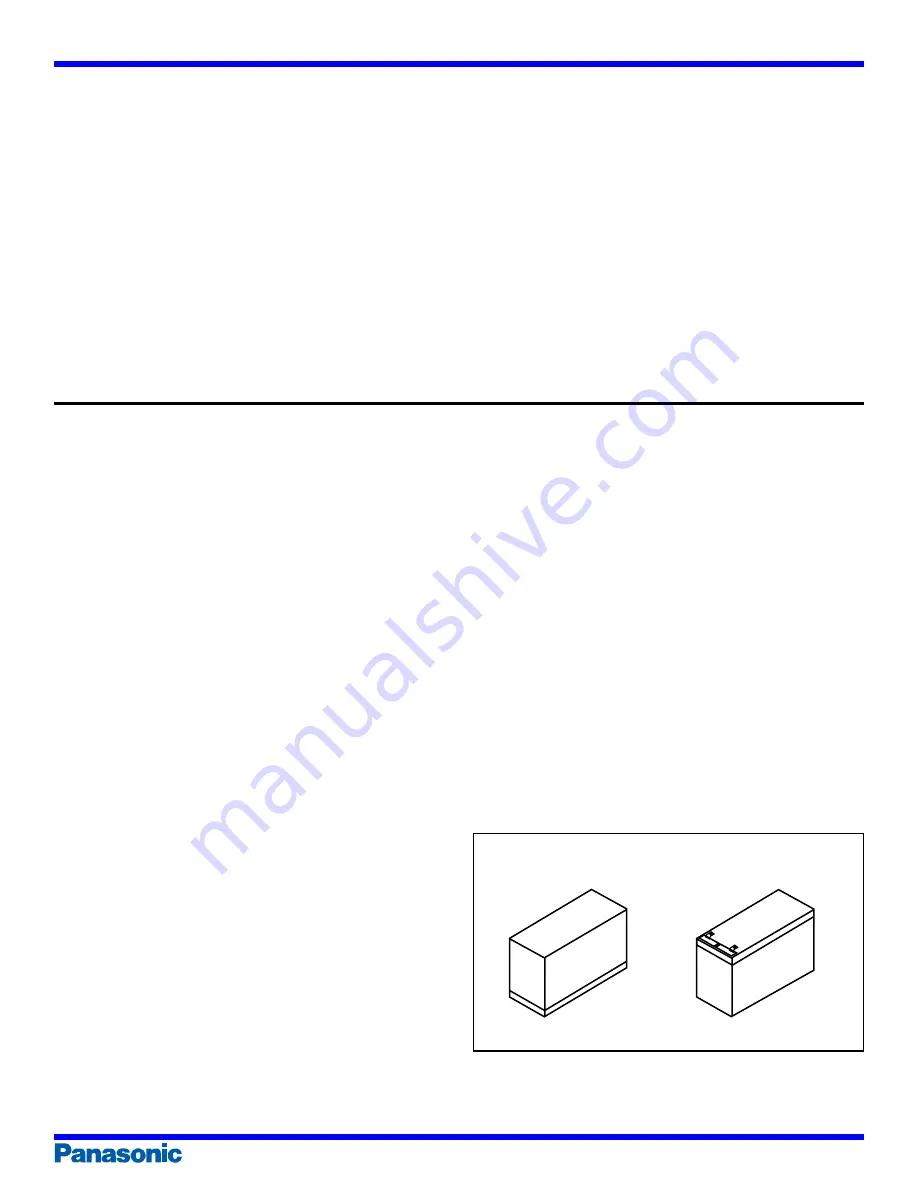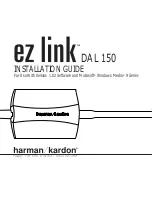
VRLA BATTERIES
AUGUST 2003
This information is generally descriptive only and is not intended to make or imply any representation, guarantee or warranty with respect to any cells and batteries. Cell and battery designs/specifications are subject
to modification without notice. Contact Panasonic for the latest information.
PRECAUTIONS FOR HANDLING VALVE-REGULATED LEAD-ACID BATTERIES-
CONT.
(6) In applications which use more than one battery,
first make sure of correct mutual connections
between batteries, and then connect the battery
with the charger or the load. Make sure to firmly
connect the (+) pole of the batteries to the (+)
terminal of the charger or load, and the (-) pole to
the (-) terminal in the same way. If the poles/
terminals of the batteries, the charger and the
load are connected improperly, explosion, ignition
or damage to the batteries and/or equipment
may occur, causing injury to personnel in some
cases.
(7) Be extremely careful not to drop the battery onto
feet to avoid the possibility of serious injury.
RECOMMENDATION
(1) Avoid sudden movements or applying shocks to
the battery e.g. from dropping the battery.
Damage and deterioration of battery character-
istics may occur if the battery is dropped.
(2) Carefully check the life characteristics of the
battery when in actual loaded mode. Life of the
battery may vary greatly depending on charge/
discharge conditions
2. Installation
DANGER
(1) Insulate metallic tools such as torque-wrenches
and wrenches with a vinyl tape, etc. Using
uninsulated tools may cause a short circuit, and
the heat or sparks generated by the short circuit
could result in burns, damage to the battery, or
ignite an explosion.
(2) Do not place the battery in a closed room or near
fire. Placing the battery in such a location could
result in an explosion or fire due to hydrogen gas
emitted by the battery.
WARNING
(1) Do not contact any plastic or resin containing a
migrating plasticizer* with the batteries. Avoid
using organic solvents such as thinner, gasoline,
lamp oil, benzine and liquid detergent to clean the
batteries. The use of any of the above materials
may cause the containers and/or the covers
(ABS resin) of the batteries to crack and leak, or
could ignite. Avoid using material containing a
migrating plasticizer by asking the manufacturer
its contents.
(2) Take safety measures such as wearing rubber
gloves for insulation when handling a voltage of
45 V or higher. Operation without safety
measures may result in electric shocks to the
operator.
(3) Avoid placing the battery in an environment which
is susceptible to floods. There is the possibility
that if the battery is immersed in water, it may
ignite or cause electric shocks to personnel.
CAUTION
(1) When unpacking the battery, make sure to
handle it gently. Rough handling may shock the
battery, causing damage. Check that the battery
is free from cracks, fractures, tipping and
leakage.
(2) When loading the battery in equipment, mount it
in the lower most section of the equipment in
order to ensure easy checking, maintenance
and replacement. Do not charge the battery in
the inverted (upside-down) position:
overcharging in the inverted position may cause
battery leakage from the safety valve. The
inverted position is demonstrated in the far left
picture below where the letters “Panasonic” on
the battery in the picture are inverted. The
following illustrations are for explaining positions
of the battery, not for showing accurate
configurations for each type of battery.
Panasonic
Panasonic
(Upside-down position)
(Upright position)
* Examples of plastic or resin to avoid: Vinyl chloride, Oily rubber.
Examples of acceptable types of plastic or resin: Polyolefin resin such
as polypropylene or polyethylene.



























